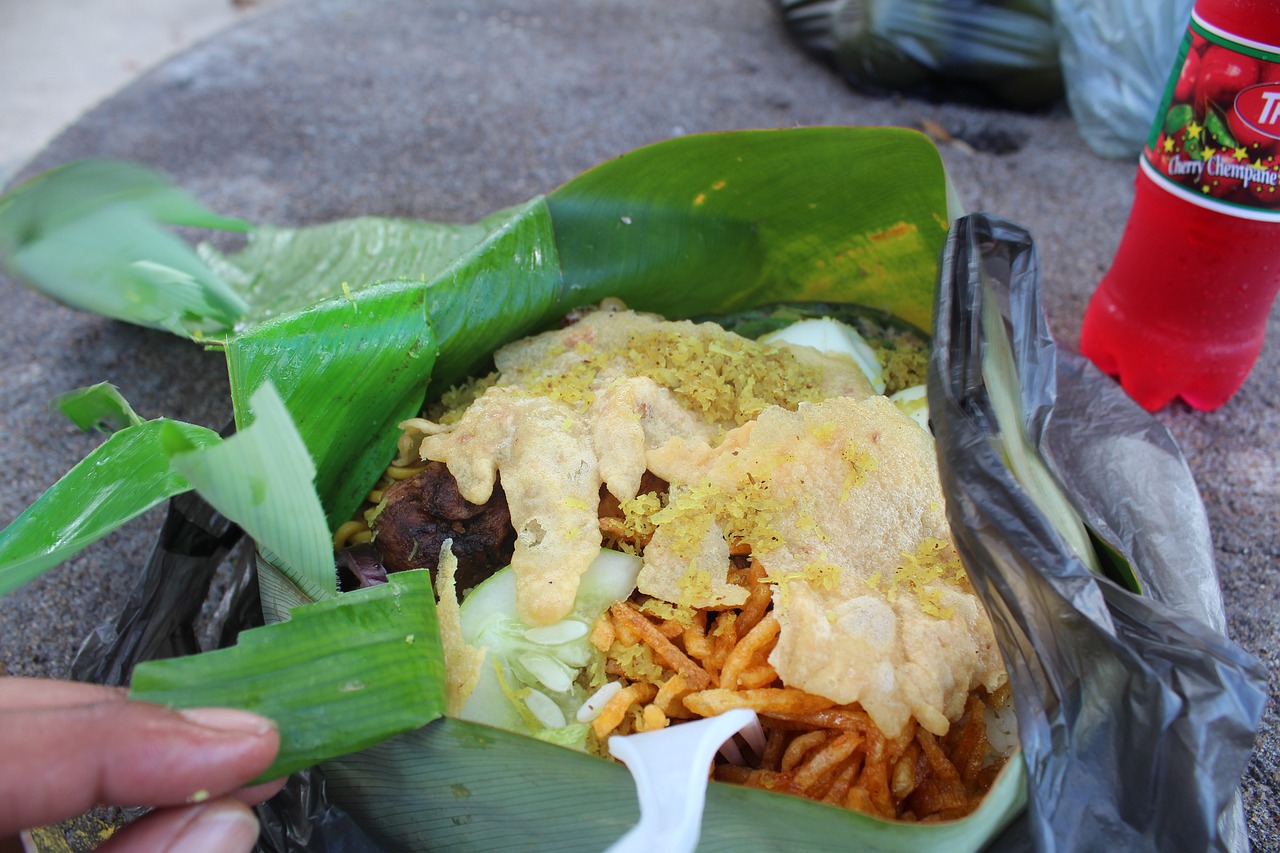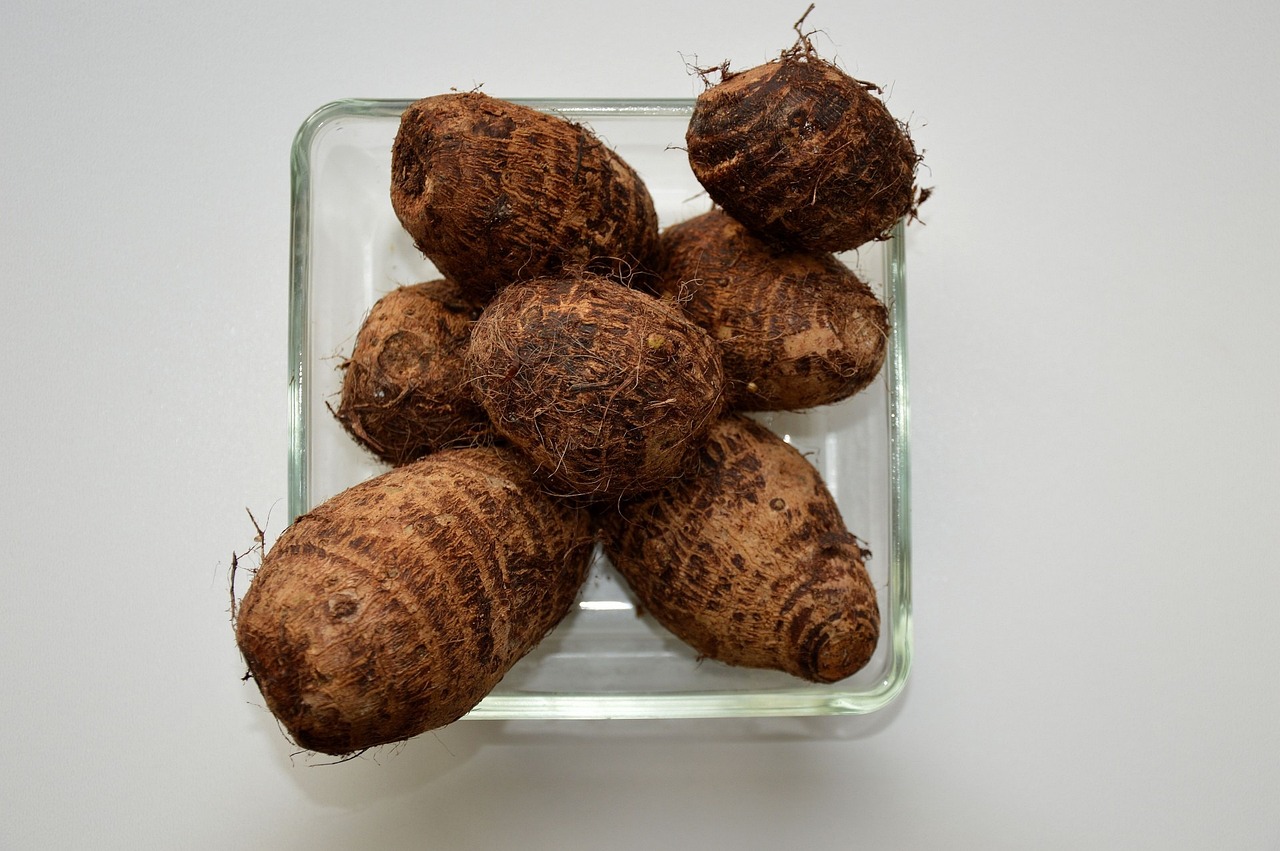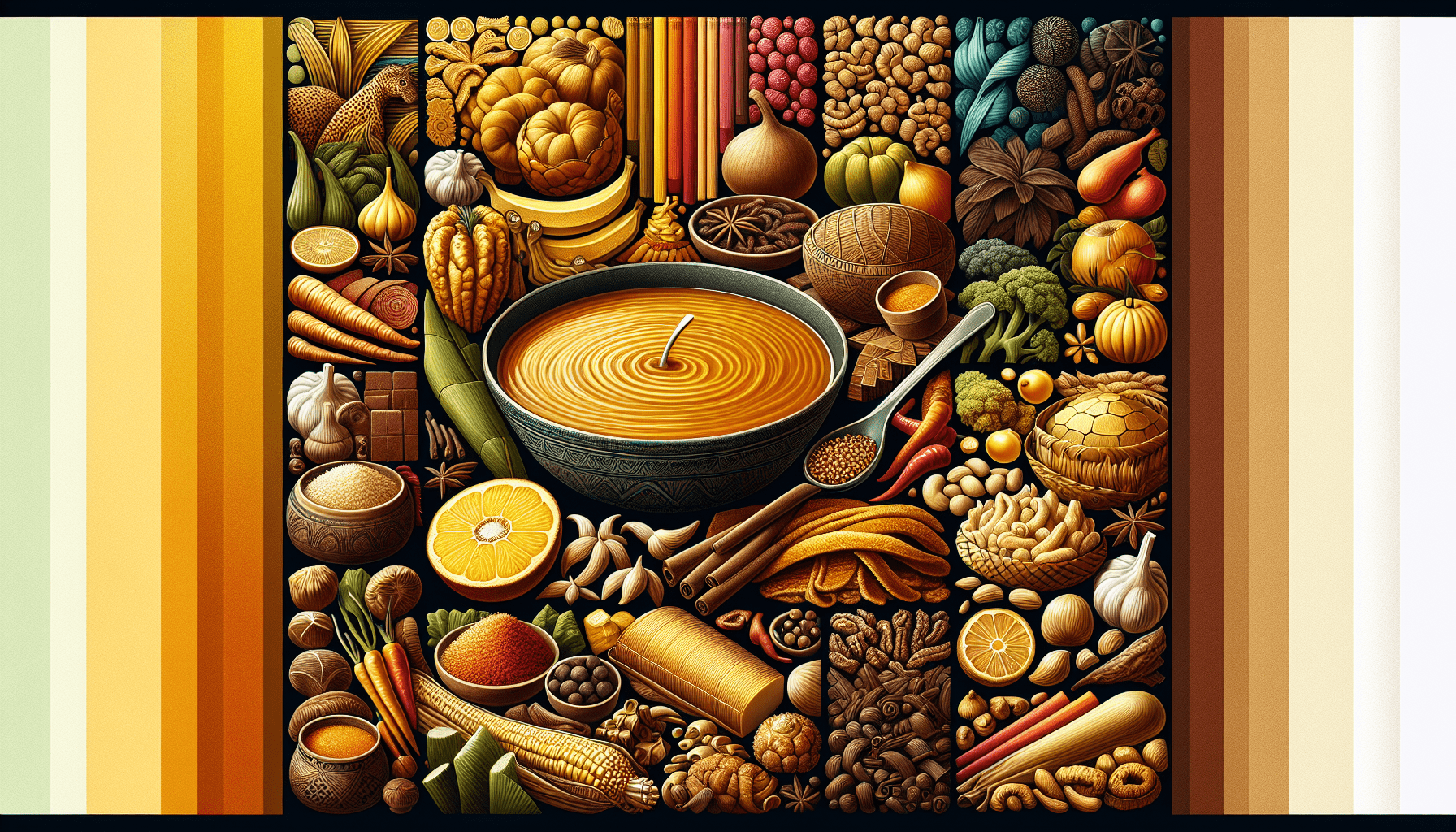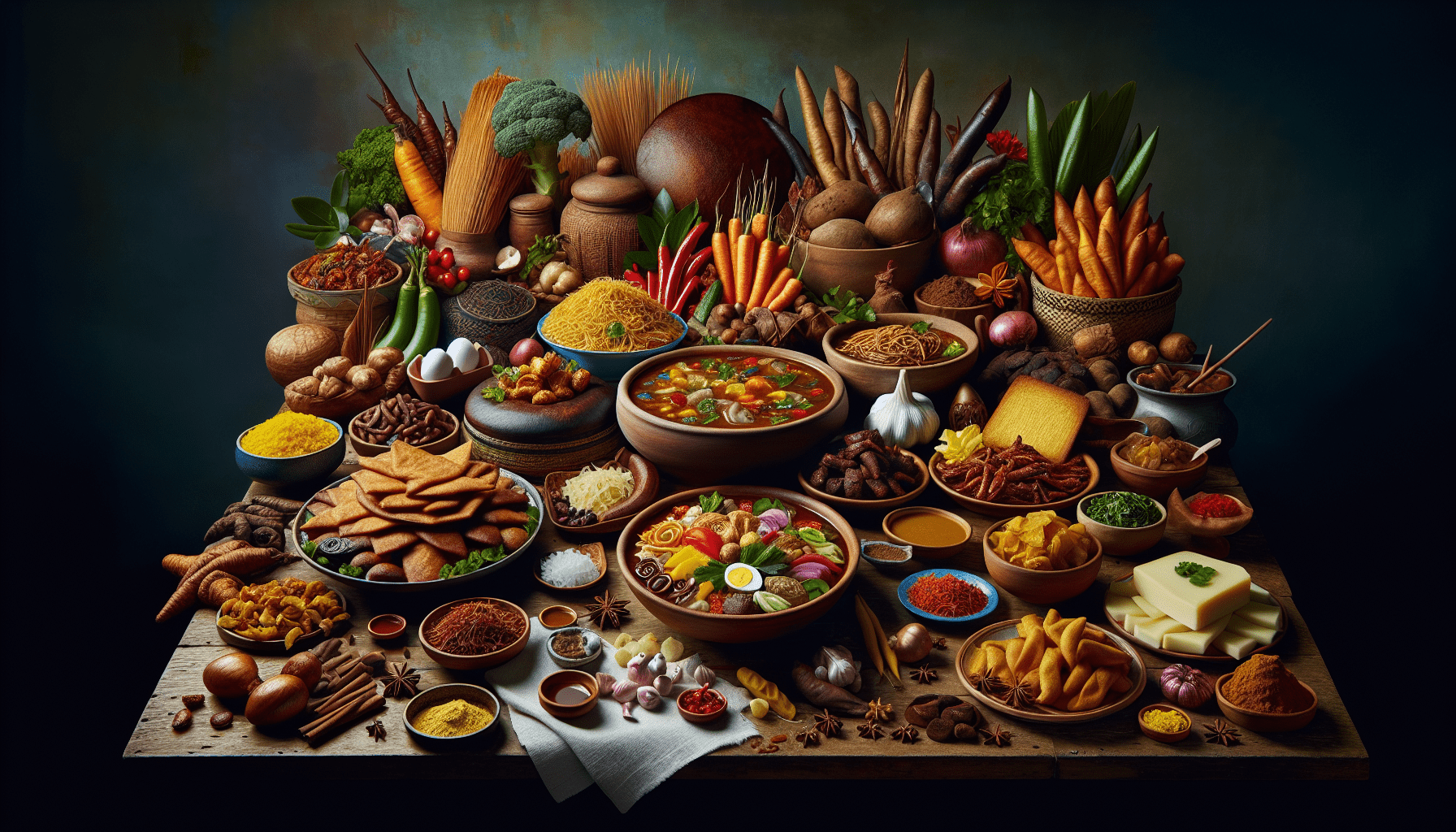Discover the rich flavors and vibrant culinary traditions of Suriname with our comprehensive guide to favorite traditional dishes. From mouthwatering roti filled with fragrant curries, to hearty bowls of pom, a delectable dish made with baked chicken and citrus-infused root vegetables, this article will take you on a journey through the diverse and delicious world of Surinamese cuisine. Whether you’re a food lover looking to expand your palate or simply curious about Suriname’s unique gastronomy, get ready to embark on a flavorful adventure that will leave you craving more of these delightful traditional dishes.
Introduction
Surinamese cuisine is a delightful fusion of various cultural influences, resulting in a unique culinary experience. The country’s rich history and diverse population have contributed to the development of a wide range of flavors and dishes. In this article, we will explore the main ingredients used in Surinamese cooking, the most popular traditional dishes, and the cultural significance behind them.
Overview of Surinamese Cuisine
Surinamese cuisine is a splendid blend of African, Indian, Javanese, Chinese, Dutch, and Indigenous Surinamese flavors. This amalgamation of cultures has led to a diverse range of dishes that are cherished by both locals and visitors alike. Suriname’s multicultural heritage is reflected in its various traditional dishes, which combine a variety of ingredients and cooking techniques.

Influence of Different Cultures on Surinamese Food
The culinary heritage of Suriname is deeply rooted in the history and cultural diversity of the country. Each culture that has made its home in Suriname has left its mark on the local cuisine. African influences can be seen in the use of staple ingredients such as rice, legumes, and various spices. Indian cuisine has brought vibrant flavors and the art of using herbs and spices to the Surinamese table. Javanese influences have introduced dishes such as Nasi Goreng and Bami, using rice and noodles in different ways. Chinese cuisine has brought its own unique style of stir-frying and cooking techniques, while Dutch influences can be seen in Suriname’s love for bread and pastries. The indigenous Surinamese people have also contributed to the country’s food culture, with traditional dishes using local ingredients like cassava and freshwater fish. The diverse cultural influences have truly transformed Surinamese food into a melting pot of flavors.
Main Ingredients
Rice
Rice is a staple in Surinamese cuisine and is found in a variety of dishes. The most popular types of rice used are long-grain white rice and jasmine rice. Rice forms the base of many Surinamese dishes, such as Nasi Goreng, Bami, and Moksi Alesi. It is often cooked with spices, herbs, and vegetables to enhance its flavor.
Legumes
Legumes, such as beans and lentils, play an essential role in Surinamese cuisine. They are used to add protein and to provide a hearty element to many dishes. Popular legumes used include black-eyed peas, kidney beans, and split peas. These legumes are often cooked with various spices and served alongside rice or as a filling for pastries.
Meat (Chicken, Beef, Pork)
Meat is a significant component of Surinamese cuisine, with chicken, beef, and pork being the most commonly consumed. Chicken is often used in dishes such as Roti, Nasi Goreng, and Bami. Beef is commonly used in stews and stir-fries, while pork is popularly used in Surinamese barbecue dishes. These meats are typically marinated in flavorful sauces and spices to enhance their taste.
Fish
Fish holds a special place in Surinamese cuisine due to the country’s proximity to the Atlantic Ocean and the Suriname River. Freshwater fish, such as catfish and tilapia, are commonly used in traditional dishes like Broodje Bakkeljauw. Salted fish, known as bakkeljauw, is a favorite ingredient used in Surinamese cuisine, adding a distinctive flavor to various dishes.
Vegetables
Vegetables are a vital part of Surinamese cooking and are used in various dishes. Some commonly used vegetables include okra, tomatoes, bell peppers, eggplant, and green beans. These vegetables are often stir-fried or incorporated into stews and curries, adding color, texture, and nutritional value to the dishes.
Herbs and Spices
Herbs and spices are the soul of Surinamese cuisine, providing depth and complexity to the dishes. Traditional Surinamese spices include massala (a blend of ground spices), masoesa (mustard seeds), and saffron powder. Other common herbs and spices used include garlic, onions, ginger, turmeric, and chili peppers. These ingredients are combined in various ways to create the distinct flavors found in Surinamese food.

Popular Surinamese Dishes
Roti
Roti is a beloved Surinamese dish that originates from the Indian subcontinent. It consists of a soft, thin bread served with various curries and accompaniments. The bread itself is made from flour, water, oil, and salt, rolled into thin circles and cooked on a griddle. The fillings or curries can include chicken, beef, and potatoes cooked in a rich, flavorful sauce. Roti is often served with a side of sambal (a spicy sauce) and pickles.
Nasi Goreng
Nasi Goreng, meaning “fried rice”, is a popular Surinamese dish influenced by Indonesian cuisine. It is made by stir-frying pre-cooked rice with a variety of ingredients, such as vegetables, meats, shrimp, and spices. The dish commonly includes onions, garlic, soy sauce, and kecap manis (sweet soy sauce). Nasi Goreng is often served with accompaniments like fried eggs, cucumber slices, and shrimp crackers.
Bami
Bami is another Indonesian-inspired dish that has found a place in Surinamese cuisine. It consists of stir-fried noodles combined with vegetables, meats, and spices. The dish is typically prepared with yellow wheat noodles, which are boiled and then stir-fried with ingredients such as onions, garlic, soy sauce, and kecap manis. Bami is often served hot with toppings such as sliced omelet, chow mein noodles, and sambal.
Pom
Pom is a unique Surinamese dish with Afro-Jewish roots. It is a savory, oven-baked casserole made from grated cassava, chicken, and various flavorsome ingredients. The dish is traditionally cooked in a banana leaf, which imparts a delicate aroma and enhances the taste. The chicken and cassava are marinated in a tangy mixture of citrus juices and spices before being baked to perfection.
Saoto Soup
Saoto Soup is a popular Surinamese chicken soup that originates from the Indonesian influence in Surinamese cuisine. It is a comforting and flavorsome dish made with chicken broth, chicken pieces, vermicelli noodles, and an array of herbs and spices. The broth is typically infused with ingredients such as lemongrass, galangal, and turmeric, giving it a distinct aroma and taste. Saoto Soup is served with condiments like fried onions, crispy garlic, bean sprouts, and lime juice.
Broodje Bakkeljauw
Broodje Bakkeljauw is a famous Surinamese sandwich made with salted fish (bakkeljauw). The bakkeljauw is soaked to remove excess salt and then cooked with onions, tomatoes, and various spices. The mixture is typically served on a fresh roll or bread and can be enjoyed with toppings like lettuce, cucumber, pickles, or sambal. The combination of the flavors and textures makes it a delicious and satisfying snack or meal.
Pastei
Pastei is a Surinamese version of a meat pie and is typically cooked as a special treat for festive occasions. It consists of a flaky pastry crust filled with a savory mixture of cooked chicken, beef, or vegetables. The filling is often seasoned with spices such as nutmeg, black pepper, and thyme. Pastei is typically served warm and can be enjoyed as a snack or as part of a larger meal.
Teloh
Teloh is a traditional Surinamese dish made from fried plantains. The plantains are peeled, sliced, and deep-fried until they become golden and crispy. Teloh is often eaten as a side dish or snack and can be served with various condiments like sambal, peanut sauce, or mango chutney. The crispy texture and sweet flavor of the plantains make Teloh a delightful treat.
Bruine Bonen met Rijst
Bruine Bonen met Rijst, meaning “brown beans with rice,” is a hearty and wholesome dish that is beloved in Surinamese households. It consists of a stew made from brown beans cooked with onions, tomatoes, and various spices. The stew is typically served with white rice, creating a satisfying and nutritious meal. It is a classic example of the cultural influences that have shaped Surinamese cuisine.
Moksi Alesi
Moksi Alesi is a flavorful rice dish that showcases the diversity of Surinamese cuisine. It consists of white rice cooked with a combination of meats, such as chicken, pork, and sausage. The rice is seasoned with various herbs, spices, and soy sauce, creating a fragrant and delicious medley of flavors. Moksi Alesi is often served with vegetables and can be enjoyed as a main course.
Roti
Origin and History of Roti
Roti is a dish that originated in the Indian subcontinent and has become a cherished staple in Surinamese cuisine. It was brought to Suriname by the indentured laborers from India, who were brought to the country during the colonial era to work on sugarcane plantations. The dish has since been adapted to include local ingredients and flavors, resulting in a unique Surinamese version of Roti.
Ingredients and Preparation
The key ingredients in Surinamese Roti are the thin bread, known as Roti skin, and various fillings or curries. The Roti skin is made from flour, water, oil, and salt, which are kneaded together to form a soft dough. The dough is then divided into small balls and rolled into thin circles before being cooked on a griddle or tawa. The fillings or curries can vary, but common ones include spiced potatoes, curried chicken or beef, and dhal (a lentil curry).
To prepare the fillings, the potatoes are boiled until tender and then cooked with spices such as turmeric, cumin, and chili powder. The chicken or beef is marinated in a mixture of yogurt, spices, and herbs before being cooked in a flavorful sauce. Dhal is made by boiling lentils with onions, garlic, and spices until they become soft and creamy.
Once all the components are ready, the Roti skin is filled with the desired fillings or curries. The filled Roti is then wrapped into a convenient package, allowing for easy consumption.
Variations of Roti
Surinamese Roti has several variations, each with its own distinct flavors and fillings. The most common variations include:
-
Chicken Roti: This variation uses curried chicken as the main filling, along with potatoes and dhal. The chicken is typically cooked with a blend of spices, including massala, garlic, onions, and ginger.
-
Beef Roti: Similar to Chicken Roti, this variation uses curried beef as the main filling. The beef is typically marinated and cooked until tender, resulting in a delicious and flavorful filling.
-
Vegetable Roti: This variation is a vegetarian option and is filled with a variety of vegetables cooked in a flavorful sauce. Popular vegetable fillings include potatoes, carrots, green beans, and cauliflower.
Popular Accompaniments
Roti is often served with various accompaniments to enhance the overall dining experience. These accompaniments include:
-
Sambal: A spicy sauce made from chili peppers, onions, garlic, and vinegar. It adds a fiery kick to the Roti and can be adjusted to personal spice preferences.
-
Achar: A tangy, pickled condiment made from vegetables, such as cucumbers, carrots, and green beans. It complements the flavors of the Roti and provides a refreshing contrast.
-
Pickles: Various pickled vegetables, such as mango, lime, or mixed vegetables, can be served alongside Roti to add acidity and a hint of sweetness.
-
Raita: A yogurt-based condiment made with cucumbers, mint, and spices. It serves as a cooling accompaniment to balance out the spiciness of the Roti.
-
Chutney: Sweet and savory fruit chutneys, such as mango chutney or tamarind chutney, can be served with Roti to add a burst of flavor.

Nasi Goreng
The Meaning and Significance of Nasi Goreng
Nasi Goreng, meaning “fried rice” in Indonesian, is a popular and well-loved dish in Surinamese cuisine. It was introduced to Suriname by Javanese immigrants and has since become a staple in Surinamese households. Nasi Goreng holds significance as a representation of the cultural exchange and fusion that characterizes Surinamese cuisine.
Ingredients and Cooking Process
Nasi Goreng is made by stir-frying boiled or pre-cooked rice with a variety of ingredients. The ingredients can vary depending on personal preferences, but commonly used ones include onions, garlic, vegetables (such as carrots, peas, and bell peppers), shrimp, chicken, and soy sauce.
To prepare Nasi Goreng, the boiled or pre-cooked rice is cooled to prevent it from sticking together when stir-frying. In a hot pan or wok, oil is heated, and the onions and garlic are sautéed until fragrant. The remaining ingredients, such as vegetables, shrimp, and chicken, are then added and cooked until they are tender and cooked through. The rice is added to the pan and stir-fried together with the other ingredients, ensuring that it is evenly coated with the flavorful sauces and spices. Soy sauce, kecap manis (sweet soy sauce), and other seasonings are added to enhance the taste and color of the fried rice.
Distinctive Flavors and Spices
Nasi Goreng is known for its complex and well-balanced flavors, resulting from a combination of spices and sauces. The use of soy sauce and kecap manis gives the dish a savory and slightly sweet taste. Other common spices and seasonings used include ground black pepper, garlic powder, and chili flakes, which add depth and heat to the dish. The dish can be adjusted to personal preference by adding more or less of these spices and sauces.
Bami
Different Types of Bami
Bami is a popular Surinamese dish that draws its inspiration from Indonesian cuisine. While there are variations in recipes and ingredients, the two most common types of Bami found in Suriname are Mihoen and Bamisoep.
-
Mihoen: Mihoen is a type of Bami that uses thin rice noodles instead of wheat noodles. These noodles are stir-fried with a combination of vegetables, meats (such as chicken, shrimp, or pork), and soy sauce. Mihoen is typically light and delicate in flavor, making it a versatile dish that can be enjoyed on its own or as a side dish.
-
Bamisoep: Bamisoep, also known as Bami soup, is a heartier version of Bami that incorporates noodles into a flavorful broth. The noodles used in Bamisoep are typically medium-thick wheat noodles that are boiled until tender. The noodles are then combined with a variety of ingredients, such as vegetables, meats, and spices, to create a robust and comforting soup.
Ingredients and Cooking Methods
The ingredients used in Bami can vary, but commonly included ones are wheat noodles, onions, garlic, vegetables (such as carrots, cabbage, and bell peppers), and proteins such as chicken, shrimp, or pork.
To prepare Bami, the wheat noodles are boiled until al dente and then drained. In a separate pan or wok, oil is heated, and the onions and garlic are sautéed until fragrant. The remaining ingredients, such as vegetables and meats, are then added and stir-fried until cooked through. The cooked noodles are added to the pan and mixed together with the other ingredients, ensuring that they are evenly coated with the flavors. Soy sauce, oyster sauce, and other seasonings are added to create a savory and umami-rich taste profile.
Traditional Garnishes and Toppings
Bami can be served on its own or with various garnishes and toppings that add flavor and texture to the dish. Common garnishes and toppings include:
-
Sliced omelet: A thin egg omelet, cooked and cut into strips or squares, is often added as a topping to give a creamy and slightly savory touch to the Bami.
-
Chow mein noodles: Crispy fried noodles are commonly used as a topping, providing a crunchy texture and an additional layer of flavor.
-
Sambal: A spicy sauce made from chili peppers, onions, garlic, and vinegar, sambal adds a punch of heat to the Bami. It can be drizzled over the dish or served on the side for individuals to adjust the spiciness to their liking.
-
Crispy shallots: Thinly sliced shallots that have been fried until crispy can be sprinkled over the Bami, adding a delightful crunch and a hint of sweetness.
-
Chopped scallions or cilantro: Fresh herbs like scallions or cilantro can be sprinkled over the Bami just before serving, providing a fresh and aromatic element to the dish.

Pom
Origin and Cultural Significance of Pom
Pom is a delectable Surinamese dish that has its roots in Afro-Jewish culinary traditions. Its history can be traced back to the Jewish community in Suriname, where it was traditionally prepared as a festive dish for weddings, holidays, and special occasions. Over time, Pom has become a beloved and iconic dish in Surinamese cuisine, celebrated for its unique blend of flavors.
Key Ingredients and Cooking Techniques
The key ingredient in Pom is cassava, a starchy root vegetable that is native to South America. The cassava is grated and then soaked in water to remove excess bitterness. Afterward, it is mixed with chicken, various flavorings, and ingredients such as citrus juices, onions, garlic, and spices. The mixture is then marinated for several hours or overnight, allowing the flavors to meld together.
Traditionally, Pom is cooked in a banana leaf, which imparts a distinct aroma and flavor. The marinated mixture is placed inside the banana leaf and wrapped tightly before being baked in the oven until the flavors are well-developed and the Cassava is tender. The result is a luscious and flavorful casserole with a balance of tanginess, sweetness, and spiciness.
Traditional Serving Suggestions
Pom is often enjoyed as a main course during festive occasions or as part of a larger meal. It is typically served with white rice, providing a neutral base to complement the rich flavors of the dish. Additional accompaniments may include pickled vegetables, such as cucumbers or mixed vegetables, which add acidity and provide a refreshing contrast to the richness of the Pom. The combination of the tender cassava, flavorful chicken, and the tangy marinade makes Pom a dish that is sure to delight taste buds and leave a lasting impression.
Saoto Soup
Traditional Surinamese Soup
Saoto Soup is a popular Surinamese soup that has its origins in Indonesian cuisine. It is a beloved comfort food in Suriname, enjoyed by people of all backgrounds. Saoto Soup is known for its rich and aromatic broth, which is flavored with an array of herbs, spices, and other ingredients.
Key Ingredients and Broth Preparation
The key ingredients in Saoto Soup include chicken, vermicelli noodles, and an assortment of herbs and spices. The chicken is cooked and shredded before being added to the soup. The broth is prepared by boiling chicken bones and aromatics, such as lemongrass, galangal, ginger, and turmeric. This combination of ingredients imparts a fragrant and flavorful base to the soup.
To prepare the broth, the chicken bones are simmered with water, herbs, and spices until a flavorful stock is achieved. The stock is then strained to remove any impurities, resulting in a clear and aromatic broth. The shredded chicken is added back to the broth, along with vermicelli noodles, which are cooked until tender.
Popular Accompaniments and Toppings
Saoto Soup is often served with a variety of accompaniments and toppings, which add texture and enhance the overall flavor profile of the soup. Common accompaniments and toppings include:
-
Fried onions: Crispy fried onions are a classic topping for Saoto Soup, adding a crunchy texture and a hint of sweetness.
-
Bean sprouts: Bean sprouts provide a refreshing and crunchy element to the soup, complementing the richness of the broth and other ingredients.
-
Fried garlic: Crispy fried garlic can be sprinkled over the soup, adding a delicious aroma and an additional layer of flavor.
-
Sambal: A spicy sauce made from chili peppers, onions, garlic, and vinegar, sambal can be served on the side for individuals to adjust the spiciness of the soup according to their preference.
-
Lime juice: Fresh lime juice can be squeezed into the soup just before serving, providing a tangy and citrusy element that helps balance out the flavors.
The combination of the fragrant broth, tender chicken, vermicelli noodles, and the variety of toppings and accompaniments make Saoto Soup a beloved dish in Surinamese cuisine.
Broodje Bakkeljauw
Famous Surinamese Sandwich
Broodje Bakkeljauw is an iconic Surinamese sandwich that features the beloved salted fish called bakkeljauw. Bakkeljauw is a dried, salted cod that has its roots in Portuguese culinary traditions. It was introduced to Suriname during the colonial era and has since become a cherished ingredient in Surinamese cuisine.
Preparation of Salted Fish (Bakkeljauw)
To prepare bakkeljauw, the dried and salted fish is soaked in water for several hours to rehydrate and remove excess salt. The fish is then boiled until it becomes tender and flaky. This process not only removes any excessive salt but also helps to rehydrate the fish and soften its texture. After boiling, the bakkeljauw is cooled and separated into small flakes, ready to be used in various dishes, including Broodje Bakkeljauw.
Typical Ingredients and Condiments
Broodje Bakkeljauw is made by combining the prepared bakkeljauw with a variety of ingredients and condiments. Some typical ingredients include onions, tomatoes, and various spices such as garlic, thyme, and peppers. The bakkeljauw is sautéed with these ingredients until they are fragrant and well combined. This flavorful mixture is then placed on fresh bread or rolls, creating a delightful and satisfying sandwich.
Broodje Bakkeljauw can be enjoyed as is or can be served with additional condiments and toppings to enhance the flavors and provide extra texture. Some popular additions include lettuce or other fresh greens, cucumber slices, pickles, or sambal. Each ingredient adds its unique touch, creating a mouthwatering combination of flavors and textures.
Conclusion
Surinamese cuisine is a celebration of cultural diversity, where various culinary traditions have come together to create a unique and flavorful experience. The fusion of African, Indian, Javanese, Chinese, Dutch, and Indigenous Surinamese influences has shaped the country’s food culture and given rise to beloved dishes such as Roti, Nasi Goreng, Bami, Pom, Saoto Soup, Broodje Bakkeljauw, and more. These dishes highlight the vibrant flavors, fresh ingredients, and expert use of herbs and spices that make Surinamese cuisine truly special.
Appreciating Surinamese cuisine means understanding the historical and cultural context in which these dishes emerged. Exploring Surinamese restaurants and recipes allows us to experience the depth and breadth of flavors that the cuisine has to offer. By preserving and promoting Surinamese culinary traditions, we ensure that future generations can continue to savor and enjoy the unique flavors of this remarkable cuisine. So, next time you have the opportunity, dive into the world of Surinamese food and let your taste buds embark on a delicious journey.